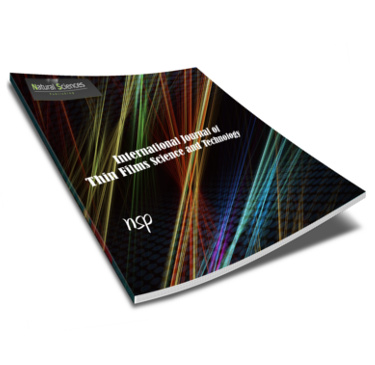International Journal of Thin Film Science and Technology

Abstract
The chemical spray pyrolysis technique is employed to prepare thin film of tin disulphide (SnS2) on glass substrate using precursor solutions of SnCl2. 2H2O and n-n dimethyl - thiourea at a substrate temperature of 548 K. Using the hot probe technique the type of conductivity is found to be n type. X ray diffraction analysis revealed the polycrystalline nature of the SnS2 thin film with crystallites of dimension 25 nm having hexagonal structure and a preferential orientation along the (002) plane. The surface morphology has been observed using field emission scanning electron microscope (FESEM). The surface composition of the elements is analyzed with EDAX spectrum. The optical absorption and transmittance spectra have been recorded for this film in the wavelength range 400 – 800 nm. Thickness of the film and variation of absorption coefficient with wavelength is determined using these spectral data. Band gap value of 2.48 eV of direct allowed nature is observed for this pyrolysised SnS2 thin film. The room temperature resistivity of SnS2 thin film is found to be 5.35 x105 Ω cm in dark and 3.03 x103 Ω cm in light respectively. Activation energy of about 0.12 eV is determined by plotting a graph between log ρ (resistivity) versus reciprocal temperature. The photoluminescence (PL) measurements showed the film has an emission peak at approximately 526 nm.
Recommended Citation
Vijayarajasekaran, J. and Vijayakumar, K.
(2015)
"Spray Pyrolytic Deposition and Characterization of Tin Disulphide Thin Films,"
International Journal of Thin Film Science and Technology: Vol. 4
:
Iss.
3
, PP -.
Available at:
https://digitalcommons.aaru.edu.jo/ijtfst/vol4/iss3/13

